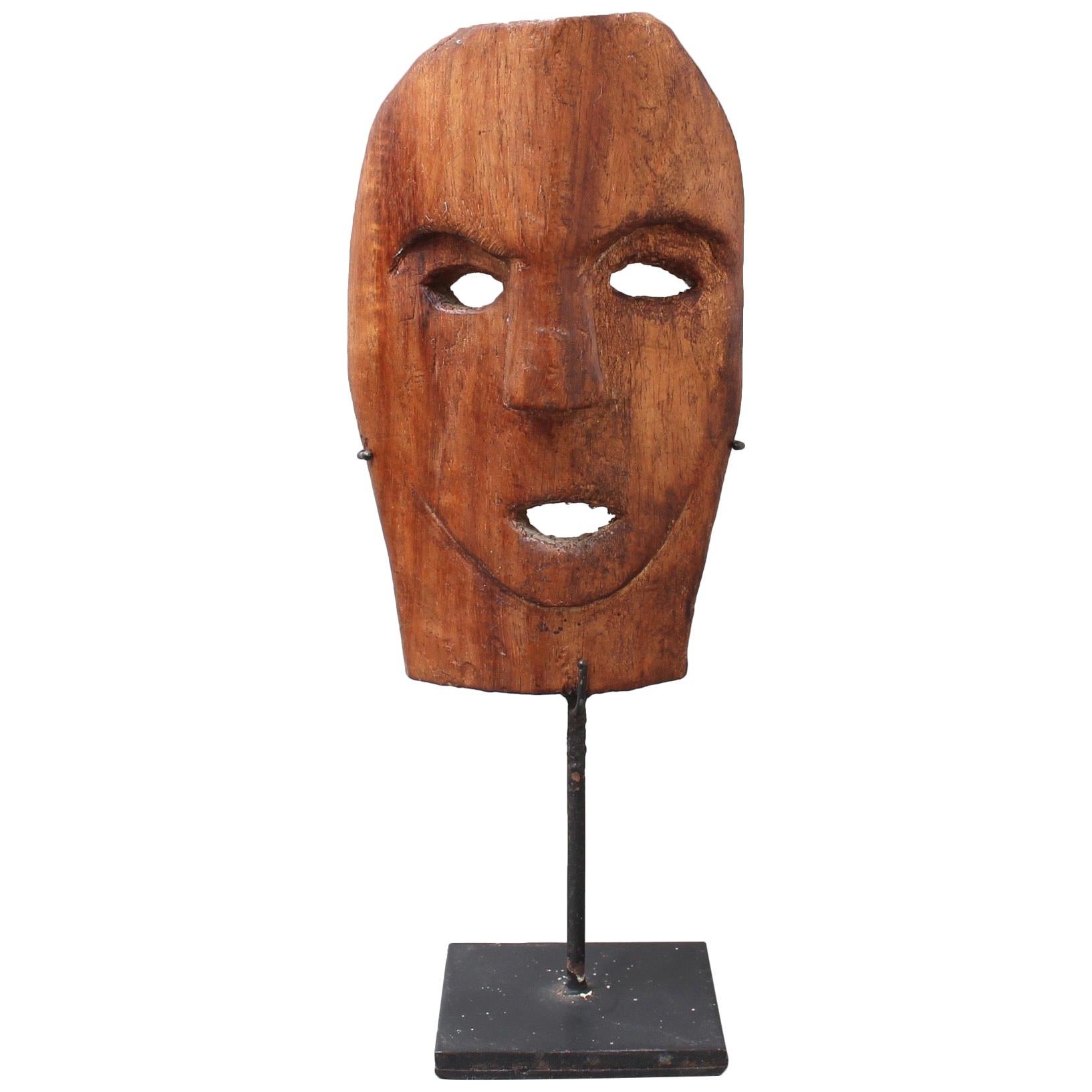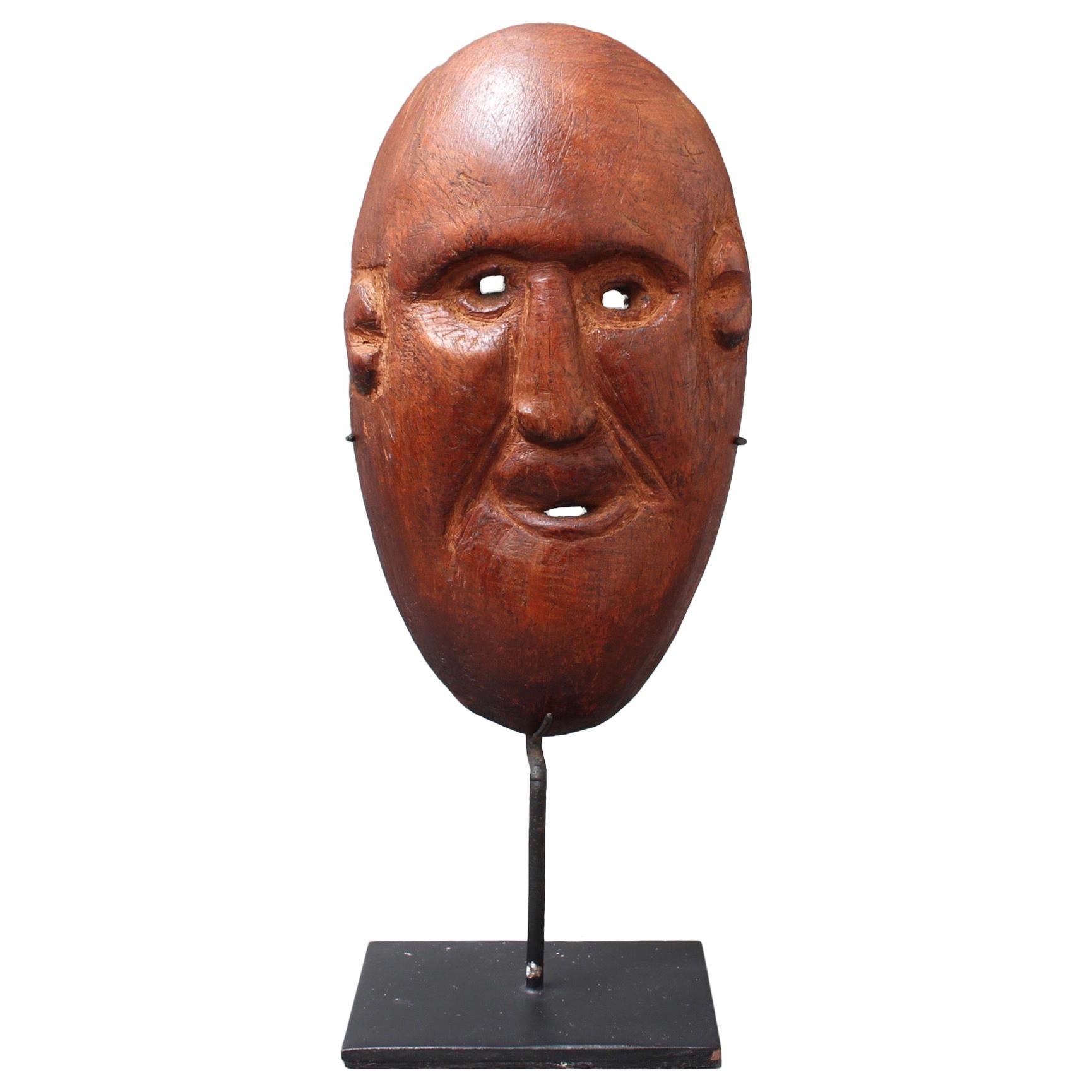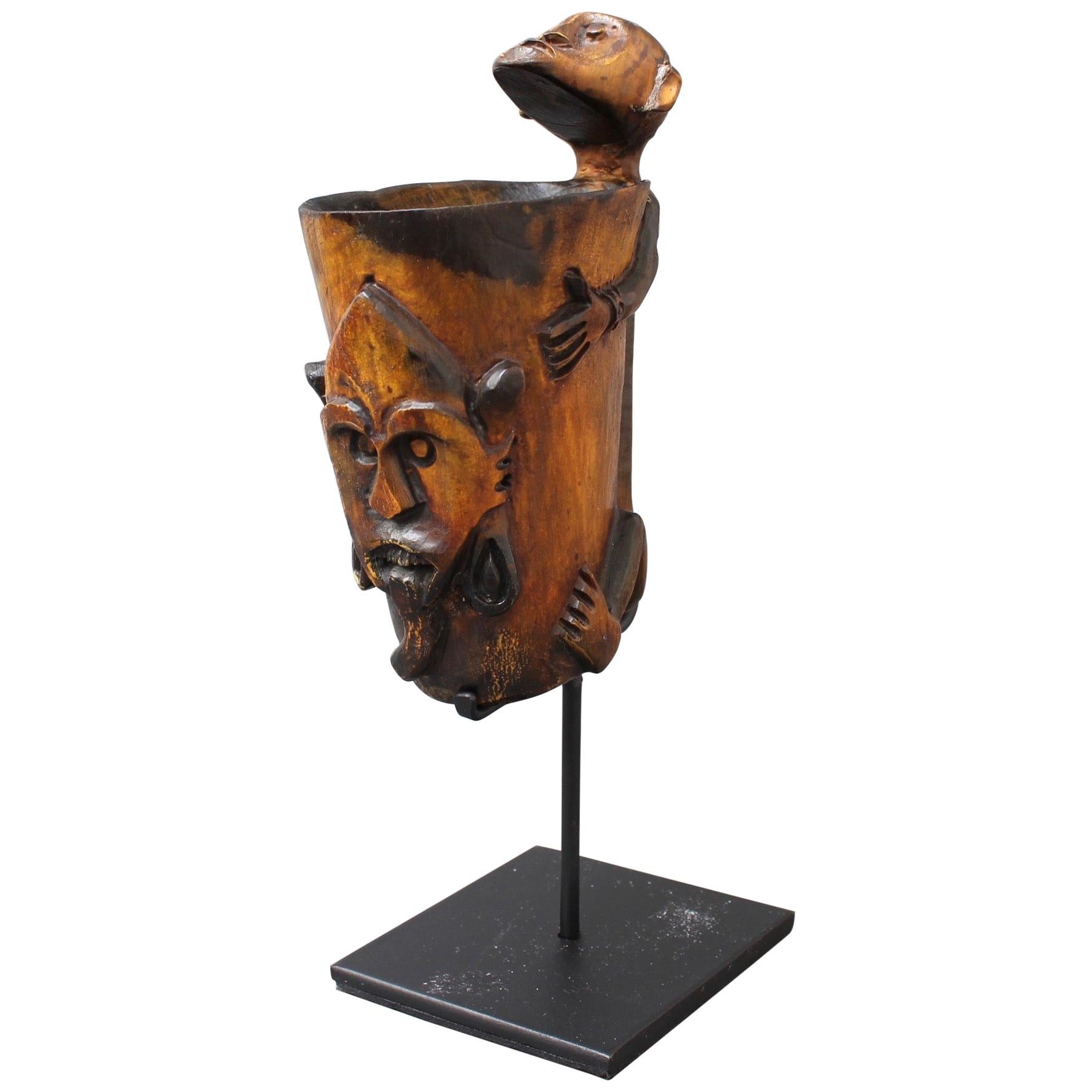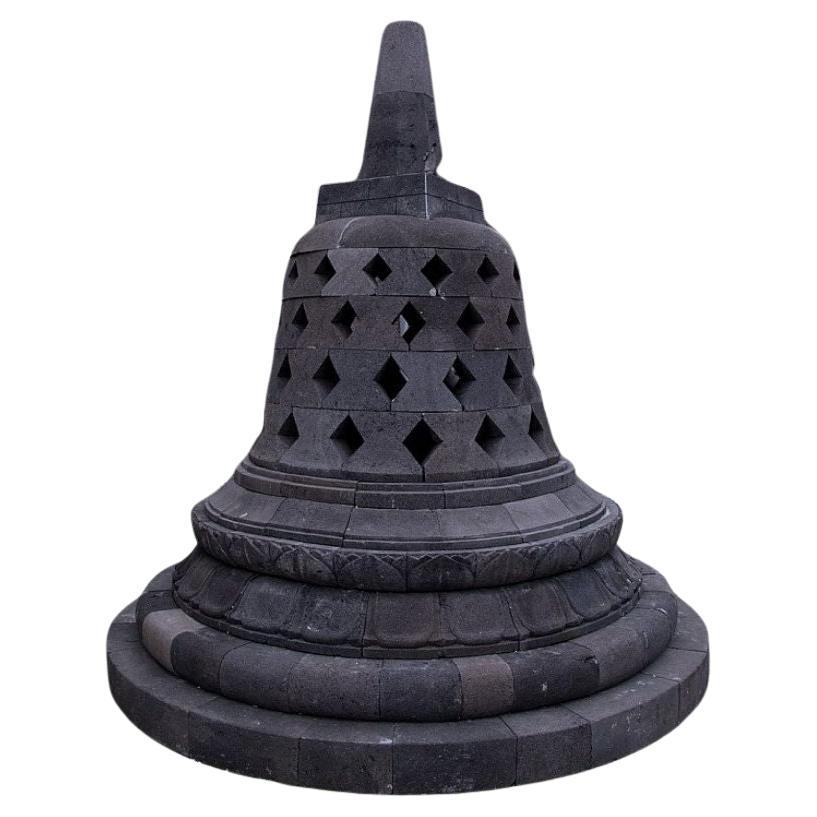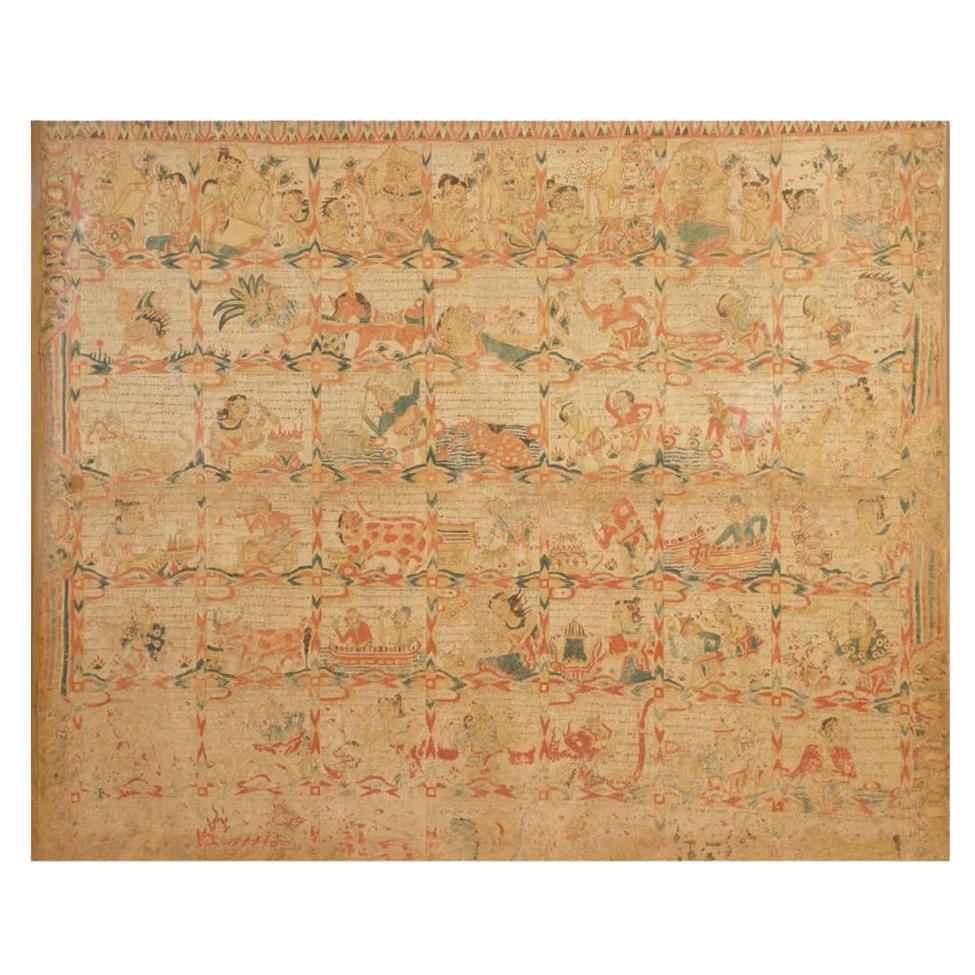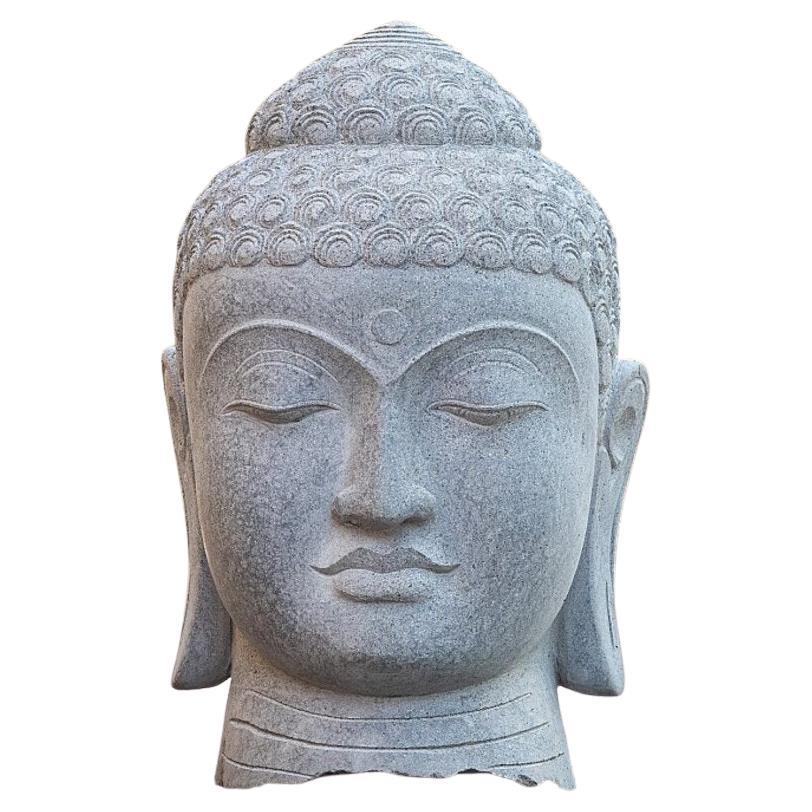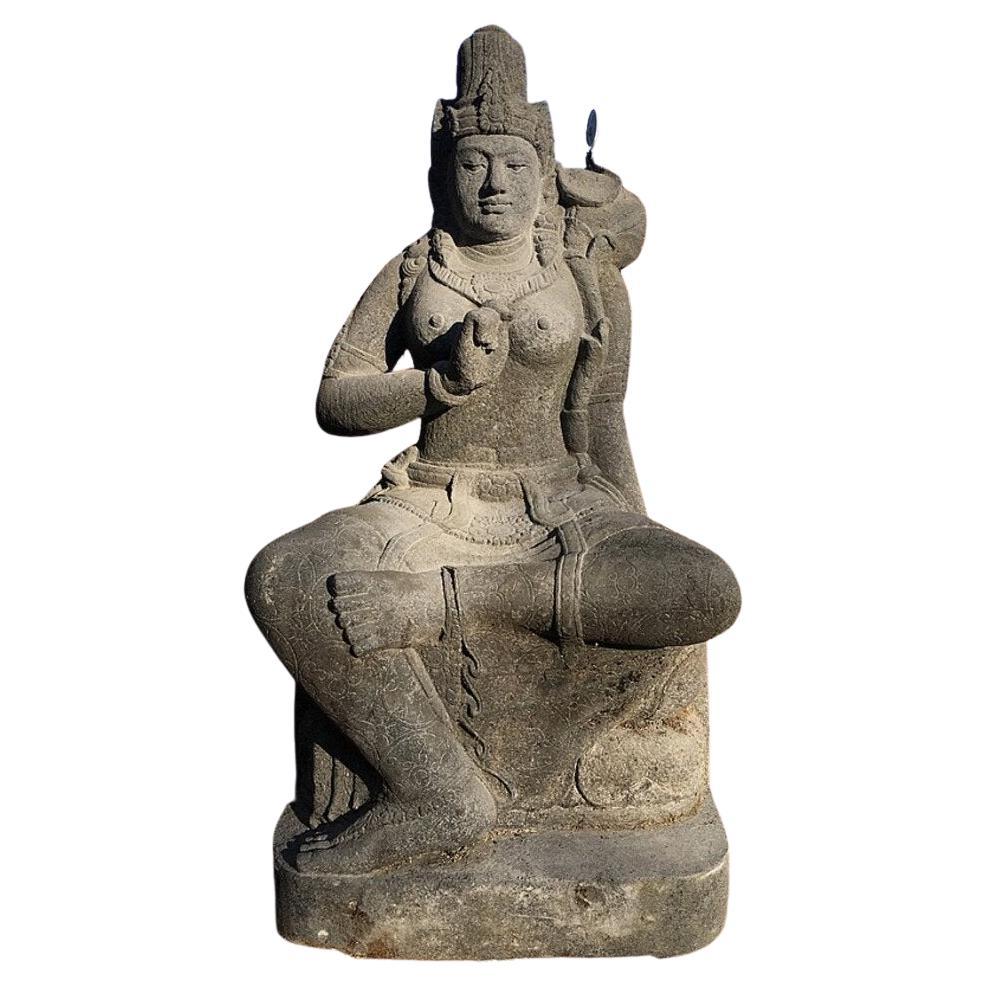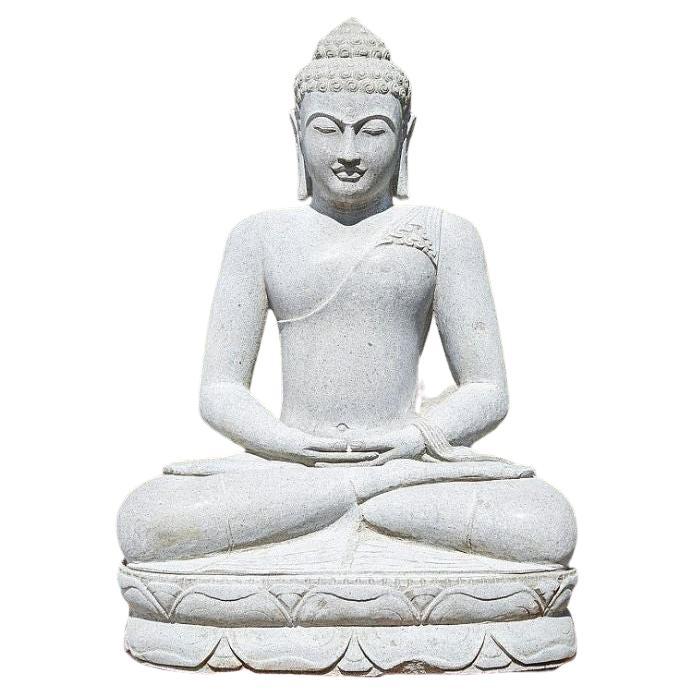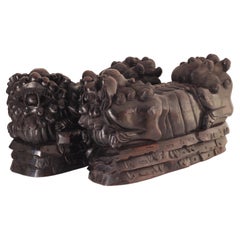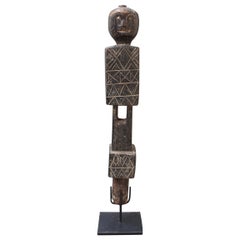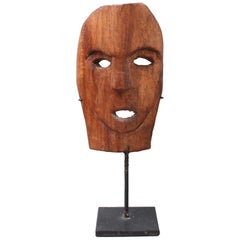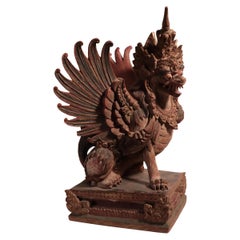
Last chance clearance sale. Balinese Winged Lion Guardian Indonesian Art
View Similar Items
1 of 13
Last chance clearance sale. Balinese Winged Lion Guardian Indonesian Art
About the Item
- Dimensions:Height: 16.5 in (41.91 cm)Width: 10 in (25.4 cm)Depth: 10 in (25.4 cm)
- Style:Tribal (Of the Period)
- Materials and Techniques:
- Place of Origin:
- Period:
- Date of Manufacture:20th Century
- Condition:Wear consistent with age and use. Minor losses. Missing tip of one feather and crack on base. See photos.
- Seller Location:Santa Fe, NM
- Reference Number:1stDibs: LU5242219127372
You May Also Like
- A pair of 19th Century carved Foo temple dogs or Chinese guardian LionsLocated in London, GBChinese guardian lions, or imperial guardian lions, are a traditional Chinese architectural ornament. Typically made of stone, they are also known as stone lions or shishi (石獅; shíshī). They are known in colloquial English as lion dogs or foo dogs / fu dogs. The concept, which originated and became popular in Chinese Buddhism, features a pair of highly stylized lions—often one male with a ball and one female with a cub—which were thought to protect the building from harmful spiritual influences and harmful people that might be a threat. Used in imperial Chinese palaces and tombs, the lions subsequently spread to other parts of Asia including Japan (see komainu), Korea, Philippines, Tibet, Thailand, Myanmar, Vietnam, Sri Lanka, Nepal, Cambodia, Laos, and Malaysia. There has been extensive interaction between Chinese mythology and Confucianism, Taoism, and Buddhism. Elements of pre-Han dynasty mythology such as those in Classic of Mountains and Seas were adapted into these belief systems as they developed (in the case of Taoism), or were assimilated into Chinese culture (in the case of Buddhism). Elements from the teachings and beliefs of these systems became incorporated into Chinese mythology. For example, the Taoist belief of a spiritual Paradise became incorporated into mythology as the place where immortals and deities used to dwell. Sometimes mythological and religious ideas have become widespread across China's many regions and diverse ethnic societies. In other cases, beliefs are more limited to certain social groups, for example, the veneration of white stones by the Qiang. One mythological theme that has a long history and many variations involves a shamanic world view, for example in the cases of Mongolian shamanism among the Mongols, Hmong shamanism among the Miao people, and the shamanic beliefs of the Qing dynasty from 1643 to 1912, derived from the Manchus. Politically, mythology was often used to legitimize the dynasties of China, with the founding house of a dynasty claiming a divine descent. Mythology and philosophy. Further information: Chinese philosophy True mythology is distinguished from philosophical treatises and theories. Elaborations on the Wu Xing are not really part of mythology, although belief in five elements could appear. The Hundred Schools of Thought is a phrase suggesting the diversity of philosophical thought that developed during the Warring States of China. Then, and subsequently, philosophical movements had a complicated relationship with mythology. However, as far as they influence or are influenced by mythology, divides the philosophical camps into two rough halves, a Liberal group and a Conservative group. The liberal group being associated with the idea of individuality and change, for example as seen in the mythology of divination in China, such as the mythology of the dragon horse that delivered the eight bagua diagrams to Fu Xi, and methods of individual empowerment as seen in the Yi Jing (Book of Changes). The Liberal tendency is towards individual freedom, Daoism, and Nature. The relationship of the Conservative philosophies to mythology is seen in the legendary Nine Tripod Cauldrons, mythology about the emperors and central bureaucratic governance, Confucianism, written histories, ceremonial observances, subordination of the individual to the social groups of family and state, and a fixation on stability and enduring institutions. The distinction between the Liberal and Conservative is very general, but important in Chinese thought. Contradictions can be found in the details, however these are often traditional, such as the embrace by Confucius of the philosophical aspects of the Yi Jing, and the back-and-forth about the Mandate of Heaven wherein one dynasty ends and another begins based according to accounts (some of heavily mythological) where the Way of Heaven results in change, but then a new ethical stable dynasty becomes established. Examples of this include the stories of Yi Yin, Tang of Shang and Jie of Xia or the similar fantastic stories around Duke of Zhou and King Zhou of Shang. Mythology exists in relationship with other aspects of society and culture, such as ritual. Various rituals are explained by mythology. For example, the ritual burning of mortuary banknotes (Hell Money), lighting fireworks, and so on. A good example of the relationship of Chinese mythology and ritual is the Yubu, also known as the Steps or Paces of Yu. During the course of his activities in controlling the Great Flood, Yu was supposed to have so fatigued himself that he lost all the hair from his legs and developed a serious limp. Daoist practitioners sometimes incorporate a curiously choreographed pedal locomotion into various rituals. Mythology and practice, one explains the other: in these rituals, the sacred time of Yu merges with the sacral practice of the present. Various ideas about the nature of the earth, the universe, and their relationship to each other have historically existed as either a background or a focus of mythologies. One typical view is of a square earth separated from a round sky by sky pillars (mountains, trees, or undefined). Above the sky is the realm of Heaven, often viewed of as a vast area, with many inhabitants. Often the heavenly inhabitants are thought to be of an "as above so below" nature, their lives and social arrangements being parallel to those on earth, with a hierarchical government run by a supreme emperor, many palaces and lesser dwellings, a vast bureaucracy of many functions, clerks, guards, and servants. Below was a vast under ground land, also known as Diyu, Yellow Springs, Hell, and other terms. As time progressed, the idea of an underground land in which the souls of the departed were punished for their misdeeds during life became explicit, related to developments in Daoism and Buddhism. The underground world also came to be conceived of as inhabited by a vast bureaucracy, with kings, judges, torturers, conductors of souls, minor bureaucrats, recording secretaries, similar to the structure of society in the Middle Kingdom (earthly China). Chinese temple Dogs...Category
Antique 1860s Chinese Chinese Export Sculptures and Carvings
MaterialsHardwood
- Carved Wooden Figure from Nias, Indonesia, circa 1960s-1970sLocated in London, GBCarved wooden vise tool with human figure finial from Nias, Indonesia (circa 1960s-1970s). A striking carved piece with geometric patterns on the top and ...Category
Vintage 1960s Indonesian Tribal Sculptures and Carvings
MaterialsWood
$458 Sale Price20% Off - Carved Wooden Traditional Mask from Timor Island, Indonesia, circa 1970sLocated in London, GBTimor Island sculpted wooden traditional mask (circa 1970s) on contemporary metal stand. This is a traditional mask of a figure with male facial features and two holes as eyes and another for the mouth with a handle below the face. The island of Timor gave rise to a distinctive practice of creating traditional masks whose precise origins and significance remain uncertain. Portraying both male and female ancestors, they were held by men during dances and other ceremonies, including celebrations of victory in war. Carved sculptures and masks are specific to rural villages. Here the practice of animism, or nature-worship, is incorporated with the carving of ancestral statues and masks, which have a ritualistic function. Some occasions that call for these ceremonies may include asking for successful crop planting, for prosperity, for good weather...Category
Vintage 1970s Indonesian Tribal Sculptures and Carvings
MaterialsWood
$254 Sale Price20% Off - 20th Century Sculpted Wooden Traditional Mask from Timor Island, IndonesiaLocated in London, GBTimor Island sculpted wooden traditional mask (circa 1960s-1970s) on contemporary stand. This is a traditional mask of a figure with male facial features and two holes as eyes and another for the mouth. The island of Timor gave rise to a distinctive practice of creating traditional masks whose precise origins and significance remain uncertain. Portraying both male and female ancestors, they were held by men during dances and other ceremonies, including celebrations of victory in war. Carved sculptures and masks are specific to rural villages. Here the practice of animism, or nature-worship, is incorporated with the carving of ancestral statues and masks, which have a ritualistic function. Some occasions that call for these ceremonies may include asking for successful crop planting, for prosperity, for good...Category
Mid-20th Century Indonesian Tribal Sculptures and Carvings
MaterialsWood
$305 Sale Price20% Off - Carved Tattoo Ink Pot from Timor Island, Indonesia 'circa 1940s-1950s'Located in London, GBCarved buffalo horn tattoo ink pot from Timor Island, Indonesia (circa 1940s-1950s) on a modern stand. The carving on this piece is very skillfully detailed at a level well surpassing most pieces from the region. A monkey grasps the ink pot as if it were climbing a tree trunk. On the forepart of the pot an ancestral or ritual mask...Category
Mid-20th Century Indonesian Tribal Sculptures and Carvings
MaterialsHorn
$688 Sale Price20% Off - Large Lavastone Stupa from IndonesiaLocated in DEVENTER, NLMaterial: lavastone 270 cm high 250 cm diameter Newly made from +/- 175 individual stones Originating from Indonesia Similar to the stupas on B...Category
21st Century and Contemporary Indonesian Sculptures and Carvings
MaterialsLava


